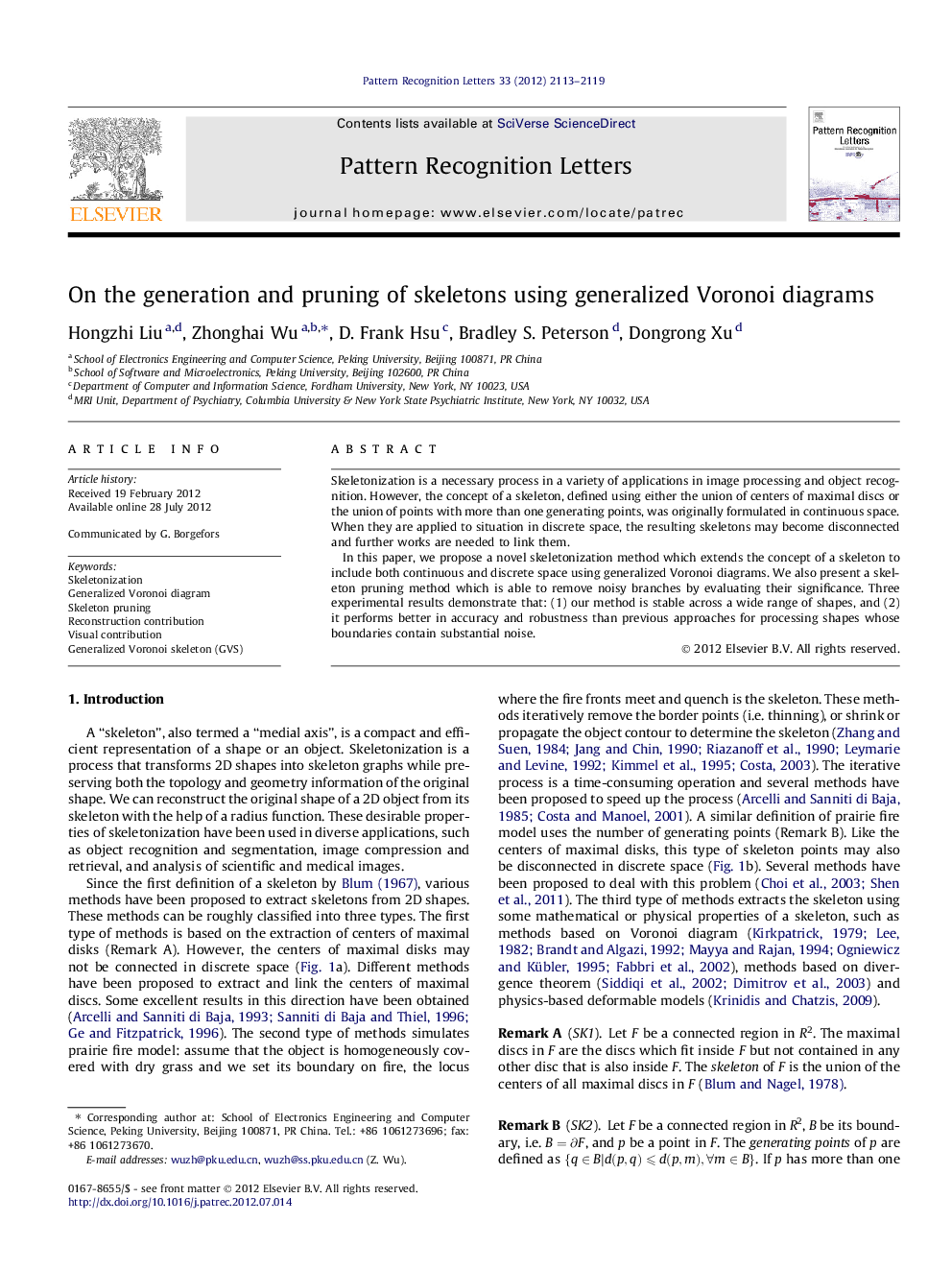| Article ID | Journal | Published Year | Pages | File Type |
|---|---|---|---|---|
| 534081 | Pattern Recognition Letters | 2012 | 7 Pages |
Skeletonization is a necessary process in a variety of applications in image processing and object recognition. However, the concept of a skeleton, defined using either the union of centers of maximal discs or the union of points with more than one generating points, was originally formulated in continuous space. When they are applied to situation in discrete space, the resulting skeletons may become disconnected and further works are needed to link them.In this paper, we propose a novel skeletonization method which extends the concept of a skeleton to include both continuous and discrete space using generalized Voronoi diagrams. We also present a skeleton pruning method which is able to remove noisy branches by evaluating their significance. Three experimental results demonstrate that: (1) our method is stable across a wide range of shapes, and (2) it performs better in accuracy and robustness than previous approaches for processing shapes whose boundaries contain substantial noise.
► Extend the concept of a skeleton to be used in both continuous and discrete space. ► Present an algorithm to extract the extended skeleton. ► Present a pruning algorithm based on two distinct properties of each branch. ► Experiments show that our method is stable across a wide range of shapes. ► Our method is accurate and robust when shape boundaries have substantial noise.
